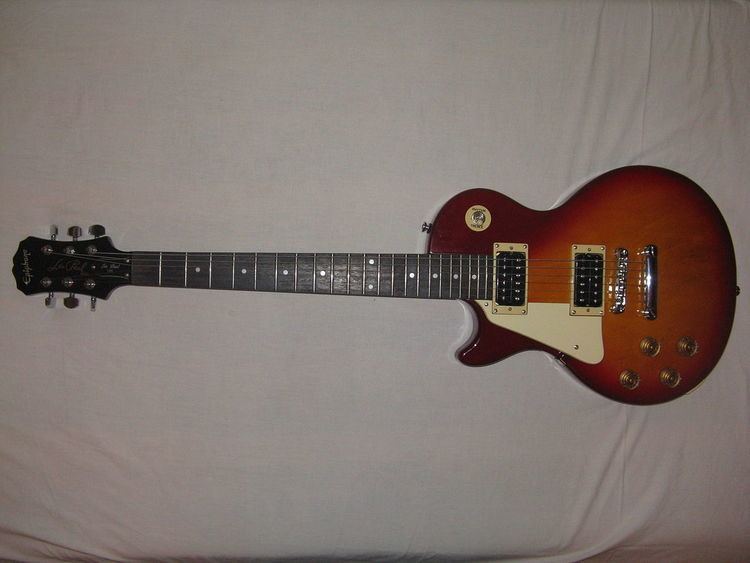Manufacturer Epiphone Body type Solid Scale 24.75" | Period 1952-Current Neck joint Bolt On | |
 | ||
Body Mahogany Body/ Maple Cap | ||
The Epiphone Les Paul 100 (LP-100) is a solid body electric guitar first produced in 1989 and is based on the Gibson Les Paul. This budget priced, authorized version of the Les Paul model is meant for beginner and intermediate players. The Les Paul 100 is outwardly very similar to the original Les Pauls. It has a traditionally shaped, single cut mahogany body, thinner than most Les Paul models, with two tone controls, two volume controls and the three position Rhythm/Treble switch. It also sports a stopbar tailpiece and Tune-o-matic bridge, like the higher end models.
The main difference with the Les Pauls is the guitar's mahogany bolt-on neck, as opposed to the set-in neck normally found on Les Pauls and other Gibson guitars. The fingerboard also sports dot inlays instead of the Les Paul's Trapezoid inlays.
The LP-100 currently comes with open coil 700T & 650R Alnico V humbucker pickups.
There have been several variations of the LP-100 model, including the LP-100 Studio, Standard (Japan), Studio-Standard (flame-top) and Deluxe (gold hardware).
Les Paul 300
Also in this range of instruments was the LP-300. The LP-300 and LP-300 Standard ran alongside of the LP-100 and began production at the same time. The LP-300 was a slightly upscale version of the LP-100. The main differences between the LP-100 and LP-300 were the body woods and fingerboard inlays. The LP-300 had a laminated maple body and block inlays. The LP-300 Standard also had a laminated maple body, but trapezoid inlays. The LP-300 was produced from 1989-1992 and was available in a Starter Pack. The Standard version was produced from 1991-1997.
